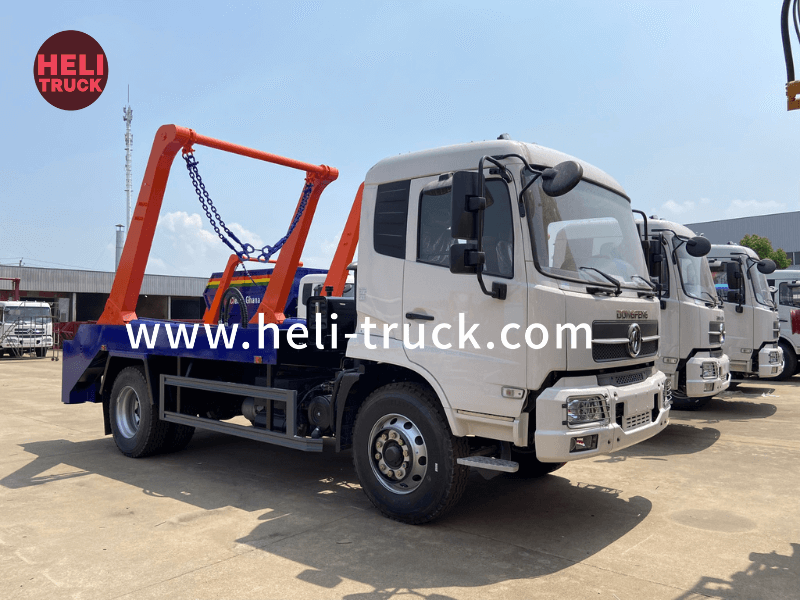The Anatomy of Garbage Compactor Truck Parts A Comprehensive Guide
Introduction
Garbage compactor trucks play a vital role in managing waste and keeping our cities clean. These specialized vehicles are equipped with various parts that work together to efficiently collect, compact, and transport garbage. Understanding the different components of a garbage compactor truck is essential for ensuring its proper functioning and maintenance. In this comprehensive guide, we will delve into the intricate details of garbage compactor truck parts, exploring their functions, importance, and maintenance requirements.
1. Chassis
The chassis is the backbone of a garbage compactor truck, providing structural support and serving as the base for mounting all other components. Typically made of steel or aluminum, the chassis must be durable and robust to withstand the rigors of daily operations. It is the foundation on which the entire garbage compactor system is built, ensuring stability and structural integrity during collection and transportation activities.
2. Compactor Body
The compactor body is the main storage unit of a garbage compactor truck where the collected waste is compacted and stored. It is usually constructed from high-strength steel to withstand the pressure and abrasion caused by compacting garbage. The compactor body features a hopper for receiving waste, a compaction mechanism for compressing the garbage, and a storage compartment for holding the compacted waste until disposal.
3. Hydraulic System
The hydraulic system of a garbage compactor truck is responsible for powering various functions, including the compaction mechanism, lifting mechanisms, and container tilting. It consists of hydraulic pumps, cylinders, valves, and hoses that work together to generate and control hydraulic pressure. Proper maintenance of the hydraulic system is crucial to ensure smooth operation and prevent costly breakdowns.
4. Compaction Mechanism
The compaction mechanism is the heart of a garbage compactor truck, responsible for compressing the waste to maximize storage capacity. It typically consists of a blade or ram that moves back and forth within the compactor body, compacting the garbage as it accumulates. The compaction mechanism is powered by the hydraulic system and must be carefully calibrated to achieve optimal compaction efficiency.

5. Hopper and Tailgate
The hopper is the opening at the front of the compactor body where waste is deposited into the truck. It is equipped with a hydraulically operated tailgate that opens and closes to facilitate the loading and compaction of garbage. Proper alignment and sealing of the hopper and tailgate are essential to prevent leaks and ensure efficient waste collection.
6. Lifting Mechanisms
Garbage compactor trucks are equipped with lifting mechanisms to hoist and dump waste containers into the compactor body. These mechanisms may include hydraulic arms, forks, or hooks that securely lift and empty waste bins or dumpsters. Regular inspection and maintenance of the lifting mechanisms are necessary to prevent accidents and ensure safe handling of heavy loads.
7. Container Tilting System
The container tilting system allows the compactor body to tilt and empty its contents into a disposal site or transfer station. It is typically operated hydraulically and must be carefully controlled to prevent spills or damage during the dumping process. The container tilting system plays a crucial role in the efficient disposal of compacted waste and must be maintained in optimal working condition.
8. Electrical System
Garbage compactor trucks are equipped with an electrical system that controls various components, such as lights, alarms, and safety devices. The electrical system includes a control panel, wiring harnesses, switches, and sensors that enable the operator to monitor and operate the truck efficiently. Regular inspection and testing of the electrical system are essential to ensure safety and reliability during operation.
9. rubbish compactor truck are equipped with a range of safety features to protect operators, pedestrians, and other vehicles on the road. These may include backup alarms, warning lights, cameras, and emergency stop buttons to prevent accidents and ensure safe operation. Regular maintenance and testing of safety features are crucial to comply with safety regulations and prevent injuries or incidents.
10. Maintenance and Troubleshooting
Proper maintenance is key to ensuring the longevity and performance of garbage compactor truck parts. Regular inspections, lubrication, and replacement of worn components are essential to prevent breakdowns and costly repairs. Troubleshooting common issues, such as hydraulic leaks, electrical malfunctions, or compaction inefficiencies, requires a systematic approach and specialized knowledge of garbage compactor systems.
Conclusion
Garbage compactor trucks are essential tools in waste management, providing efficient collection and disposal solutions for municipalities, businesses, and communities. Understanding the intricate details of garbage compactor truck parts is vital for operators, maintenance personnel, and fleet managers to ensure the reliable operation of these specialized vehicles. By maintaining and servicing the chassis, compactor body, hydraulic system, and other components, garbage compactor trucks can continue to fulfill their crucial role in keeping our cities clean and sustainable.